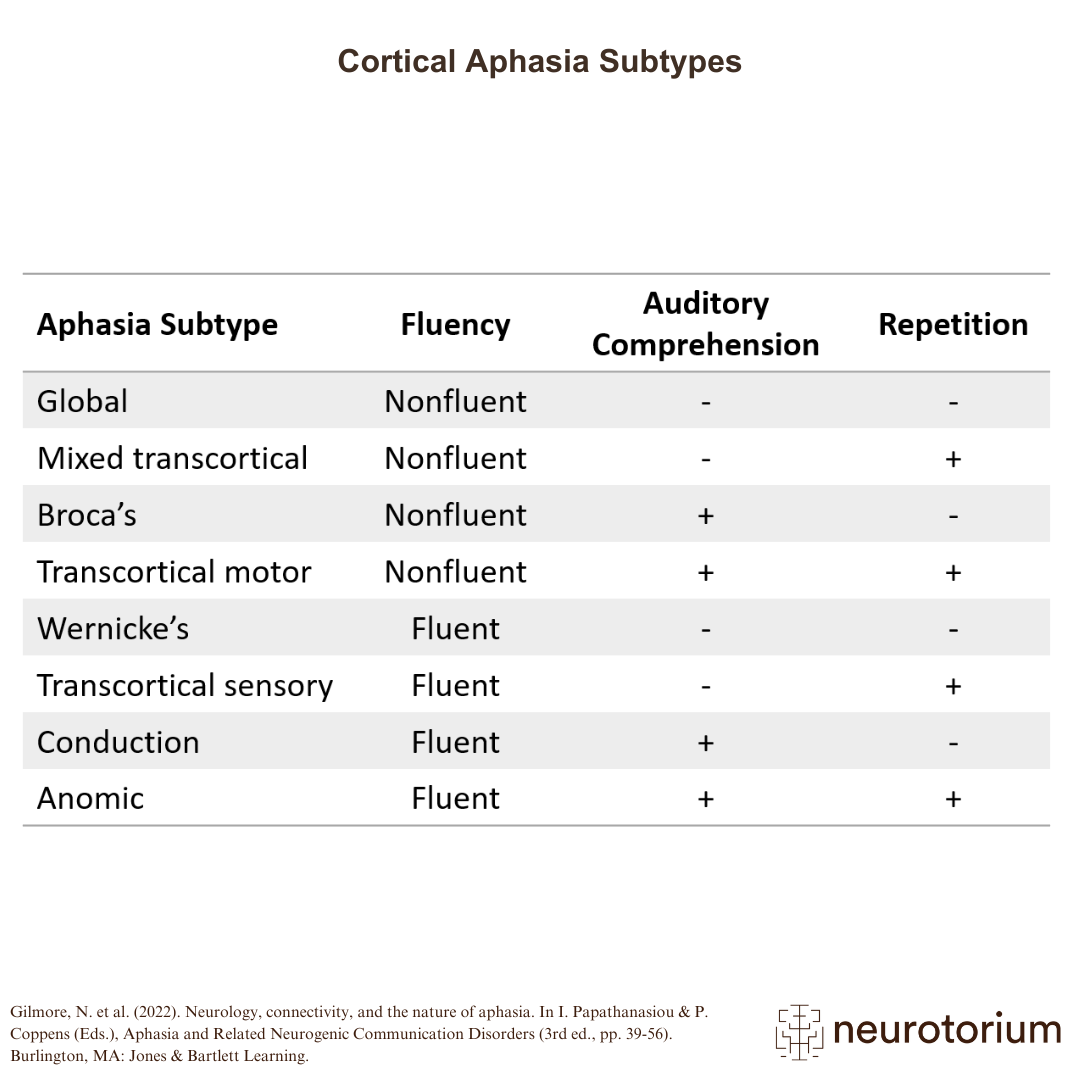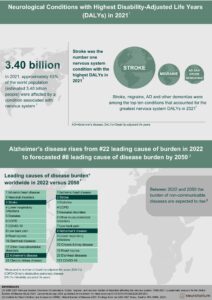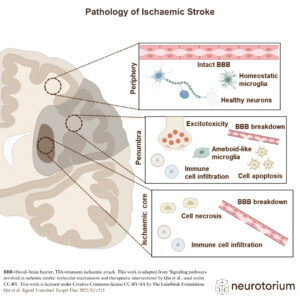This table represents the traditional classification schemes for cortical aphasias that use fluency (verbal output), auditory comprehension, and repetition skills as methods to triage people into different aphasia subtypes. A plus (+) represents a relative strength or preservation of skill post-stroke while a negative (-) represents a relative weakness or impairment of skill post-stroke.1






